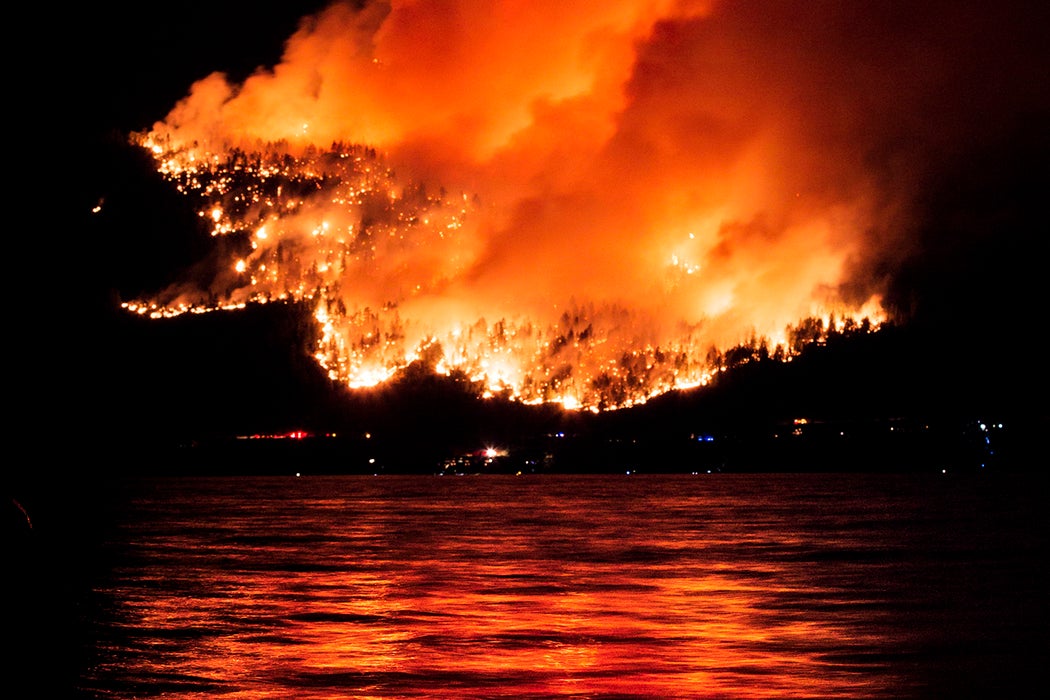It’s been a rough fire season in the American West. Huge wildfires have devastated neighborhoods, burned hundreds of thousands of acres of land, and killed several firefighters and civilians. Air quality across the western states is poor, with little relief in sight. While approving federal support for devastated areas, President Trump proposed the theory that poor water management is the cause of the blazes. In fact, the president has it exactly backwards; water management problems don’t generally cause fires, but fires do cause water problems.
For many systems, including grasslands and western forests, fire is an important component of ecosystem maintenance. As has been widely documented, the number and intensity of wildfires has been increasing, with harmful effects on the water supply. The impacts stem from how fire changes the vegetation surrounding watersheds and streams. As described by forestry researchers Daniel G. Neary, Gerald J. Gottfried, Leonard F. DeBano, and Aregai Tecle in the Journal of the Arizona-Nevada Academy of Science, healthy fires and prescribed burns performed as part of landscape maintenance have little to no effect on watersheds; the woody debris is cleared out but forests and scrub landscapes retain their soil and much of the vegetation survives.
Catastrophic fires such as we are seeing now, however, are another matter. These huge fires completely burn not only the small woody debris but the trees as well. Even the soil itself is charred to a significant depth below ground level. Without the trees and the subsoil to hold the water, water yield, a measure of runoff, increases drastically. In these severe fires, the water that would be stored in the watershed runs off into the sea. Forests are strictly protected around important watersheds for precisely this reason. One example is the Catskills watershed, which provides water to New York City.
Want more stories like this one?
With the soil burned and exposed, researchers have found that erosion and mudslides become risks, further damaging the capacity of watersheds to hold water. The risk is greatest during short, intense rainfall—precisely the type of rain that is common in parts of the American West. Heavy rain also risks washing debris into bodies of water. Without vegetation to provide shade, the water temperature can increase significantly, killing temperature-sensitive species like trout, and decreasing available habitat.
Moreover, ash washing into streams directly alters water chemistry, with signficant consequences for aquatic life. The effect varies depending upon the type of stream and the severity of the fire, but a 1992 paper in Biogeochemistry explains how the aftermath of a fire alters the ionic concentrations of water. The net result is that the water becomes considerably more acidic, which can persist for years. Many aquatic organisms can only survive in a specific acidity range, so these consequences can be serious. These chemical changes are combined with the temperature and flow changes. As fires increase in frequency and severity, these problems will only magnify.







